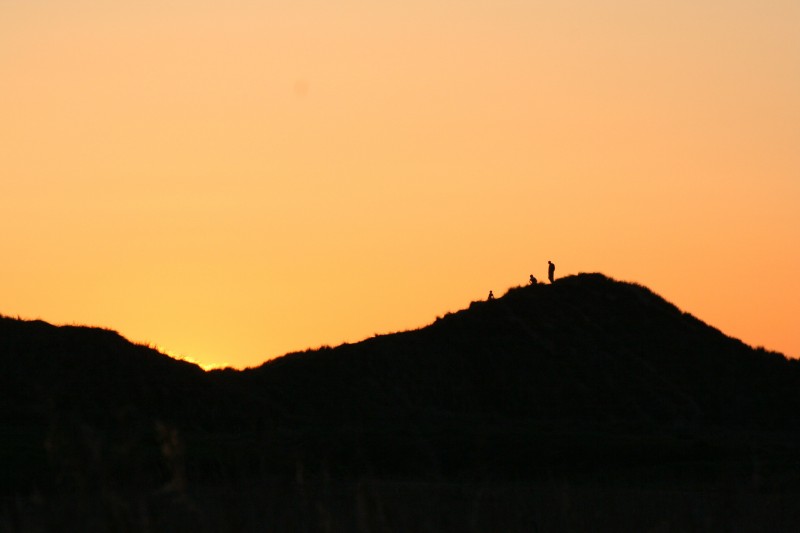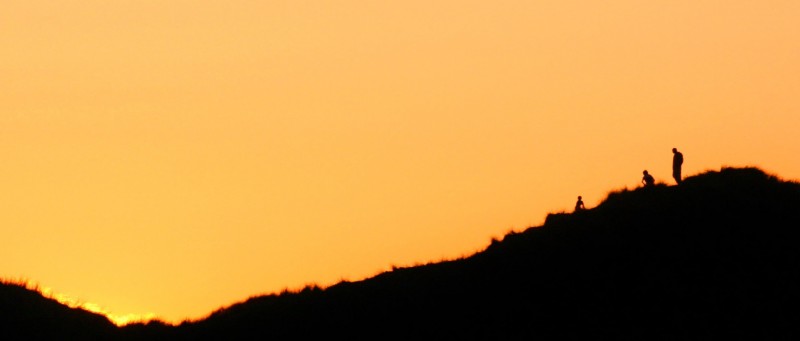The majority of photographers want other people to see their photographs. When people do see your pictures do they get the point?
When I entered my first photography competition at a camera club I was shocked at how unimpressed the judge was with my favourite digital photo of the time. The picture did not impress [see below].
I was proud of the shot. So why didn’t the judge get it? Well, his analysis was clear. Lots of orange up top. A bit hackneyed. No interest. Lots of black down in the bottom half of the shot. No content there, no interest. An interesting dune line breaking up the shot with some great silhouettes of people and grass tussocks. Overall, little interest.
I had broken one of the fundamental requirements of photography – ‘keep it to the point’. The point was the wonderful silhouette and the family standing atop the dune enjoying the moment made the shot and gave the human interest. However, with all the orange above and the black below the shot lost its impact. A simple picture ruined because of the large and distracting orange and black areas that did not show anything.
In another competition, sometime later, I re-presented this picture. I had changed the shot. It was cropped (cut into a new shape) to remove the uninteresting parts. There was a thin orange band above the dune, and a thin black band of dune below the dune-skyline. The overall shot was cropped as a letterbox format – long and thin. The figures were larger in the frame and the contrast of black and orange broken by the family on the skyline presented a strong contrast. This all made for an interesting and enjoyable reminder of a wonderful moment in a timeless landscape.
The first presentation failed because the point was lost in large areas of no interest. The second time this picture was judged it received a great response. I had focussed the viewer’s eye on a long thin box. This draws the eye down the length of the box. The main line in the shot was a distinct and interesting one that portrayed an enjoyable story. The colours and setting gave the viewer great feelings of peace and serenity.
I made the point in my second shot because of the crop. In all other respects the photograph was unchanged. I used the line of the crop to emphasis the important features of the picture. I did that at the same time as removing unnecessary parts of the photo.
In all your shots, try to compose so you make a point. If it is not completely achievable in the frame of your shot, use a crop to deepen the emphasis. Cropping is probably the simplest post-processing method and it is one that can have the most impact if done right. Learn to crop well and you may find you need do no other processing – at least for some of your shots.
Composition
Definition: Crop; Cropping; Cropped
To Crop or Not to Crop… That is the Question
We would love to have your articles or tips posted on our site.
Find out more…
Write for Photokonnexion.




